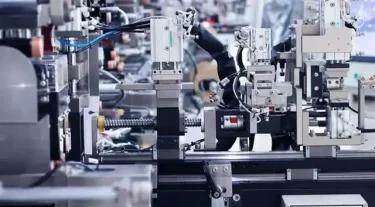
# Tape Production: Processes and Techniques in Manufacturing
## Introduction to Tape Manufacturing
Tape manufacturing is a complex process that involves multiple stages to create adhesive products for various applications. From everyday household uses to industrial applications, tapes play a crucial role in modern life. The production process combines material science, engineering, and quality control to create reliable adhesive solutions.
## Raw Materials in Tape Production
The foundation of tape manufacturing begins with selecting appropriate raw materials:
– Backing materials (paper, plastic films, cloth, or foil)
– Adhesive compounds (rubber-based, acrylic, or silicone)
– Release liners (for pressure-sensitive tapes)
– Additives (tackifiers, stabilizers, and fillers)
## Core Manufacturing Processes
### 1. Backing Material Preparation
The first stage involves preparing the base material that gives the tape its structural integrity. This may include:
– Extruding plastic films
– Weaving or knitting fabric backings
– Coating paper substrates
– Metallizing foil materials
### 2. Adhesive Application
Various methods are used to apply adhesives to the backing material:
– Solution coating (adhesive dissolved in solvent)
– Hot melt coating (molten adhesive application)
– Water-based coating (eco-friendly alternative)
– 100% solids coating (no solvents or water)
### 3. Drying and Curing
After adhesive application, the tape undergoes drying or curing processes:
– Thermal drying ovens
– UV curing systems
– Electron beam curing
– Air drying for solvent evaporation
### 4. Slitting and Rewinding
The large rolls of coated material are then processed into final product dimensions:
– Precision slitting to desired widths
– Rewinding onto cores for packaging
– Edge trimming for clean finishes
– Quality inspection during winding
## Specialized Tape Production Techniques
### Double-Sided Tape Manufacturing
This process involves:
– Applying adhesive to both sides of a carrier material
– Using release liners to protect adhesive surfaces
– Precise tension control during production
### Foam Tape Production
Special considerations include:
– Laminating foam substrates with adhesives
– Maintaining foam integrity during processing
– Controlling thickness and compressibility
### Electrical Tape Manufacturing
Key production aspects:
– Using vinyl or other dielectric materials
– Ensuring consistent thickness for insulation properties
– Incorporating flame-retardant additives
## Quality Control in Tape Manufacturing
Maintaining consistent quality involves:
– Adhesion testing (peel, tack, and shear tests)
– Thickness measurement and uniformity checks
– Visual inspection for defects
– Accelerated aging tests for performance prediction
## Environmental Considerations
Modern tape manufacturing focuses on sustainability through:
– Reducing solvent use in adhesives
– Implementing recycling programs for waste materials
– Developing biodegradable tape options
– Energy-efficient production processes
## Future Trends in Tape Production
Emerging technologies are shaping the future of tape manufacturing:
– Nanotechnology-enhanced adhesives
– Smart tapes with embedded sensors
– Bio-based adhesive formulations
– Automated quality control systems using AI
The tape manufacturing industry continues to evolve, offering innovative solutions for an ever-expanding range of applications while maintaining focus on quality, performance, and environmental responsibility.
Keyword: tape manufacturing